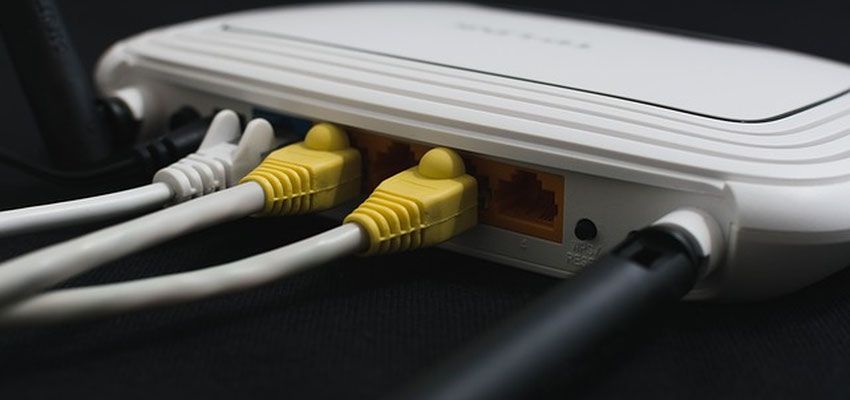
How To Connect Two Routers on A Home Network
Posted June 12, 2019, 6 p.m. by Michael GA lot of home computer networks operate from just one router, but you could also add a second router to enjoy more benefits. Here are some situations that could benefit from a second router.
- Upgrading a wired network to be able to support a wireless device.
- Extending the Wi-Fi home network to reach dead spots.
- When a wired device cannot be covered under the range of the original router.
- A subnetwork at home can help stream videos without slowing down the connection in other devices.
You can achieve all these in just a few simple steps.
How to Position a Second Router
Whenever you are setting up a new router, always place it near another computer or a Windows PC so that you can use it during the configuration. Whether your router is wireless or wired, the best way to configure it is from a computer that is connected through an Ethernet network cable. You can move the router to its permanent location once it is configured.
How to Connect Your Second Wired Router
If your new router doesn’t have a wireless capability, you must connect it to the first router through an Ethernet cable. Take one end of the cable and then plug it into the uplink port of the new router. The uplink port is also sometimes labeled as “internet” or “WAN.” Take the other end and then plug it into a free port on the main router. Avoid the uplink port.
How to Connect Your Second Wireless Router
You can simply connect your wireless routers at home through an Ethernet cable in the same way as you would connect wired routers. You can also connect two routers without the cable, but in most configurations, it can only be used as a wireless access point and not a router.
You have to set up the second router in client mode to be able to utilize all of its routing functionality, but most of the home routers do not support this. To find out whether your router supports client mode or not, you can check the router’s documentation.
Setting up Your Wi-Fi Channel for Wireless Home Routers
If both your routers are wireless, their signals can interfere with each other which will slow down the network and cause a drop in connections. There is a certain Wi-Fi frequency range aka ‘channel’ that wireless routers utilize, which means that interference in the signal occurs when there are two wireless routers at home, competing for the same channel or when the channels overlap.
By default, wireless routers operate from their Wi-Fi channels based on their model, but you can change these settings through the console of the router. If you are using two routers at home, you can prevent signal interference by setting one router to channel 1 or 6 and the other router to channel 11.
Configuring IP Address of Your Second Router
Each home network router comes with an IP address setting by default, based on the model. You don’t need to change the default IP setting of your second router unless you want to configure it as a network switch or an access point.
How to Use Your Second Router as an Access Point or Switch
The procedures above will help you add a second router to your home network to support a subnetwork under it. This is quite useful when you want to have a certain level of control on certain devices such as limiting their access to the internet.
Another alternative is to configure the other router as a point of access (if it is wireless) or an Ethernet network switch. This will allow the devices to connect to the second router without creating a subnetwork.
If you just want to extend your internet access at home and enable printer and file sharing to additional computers, you can simply set up a no-subnetwork. An added benefit to this is that you won’t have to set up a separate configuration procedure.
How to Configure a Second Router without a Sub-network
If you want to set up your second router as a network switch, you can simply plug in an Ethernet cable into any of the ports in the router (avoiding the uplink port). Next, you connect it to any of the free ports in the main router (avoiding the uplink port).
If you want to set up your second wireless router as an access point, you can configure it to either repeater or bridge mode linked to the main router. To find out the specific settings, check the documentation of the second router.
Here is how to update the IP configuration both for wired and wireless routers.
- Check the IP address of your second router. Make sure that it is within the address range of the main router and not in conflict with other devices in the local network.
- Make sure the DHCP address range of your second router is within the address range of the main router. You can also disable the DHCP and set the IP address of each device that is connected to the other router to make sure it is within the network range of the main router.
